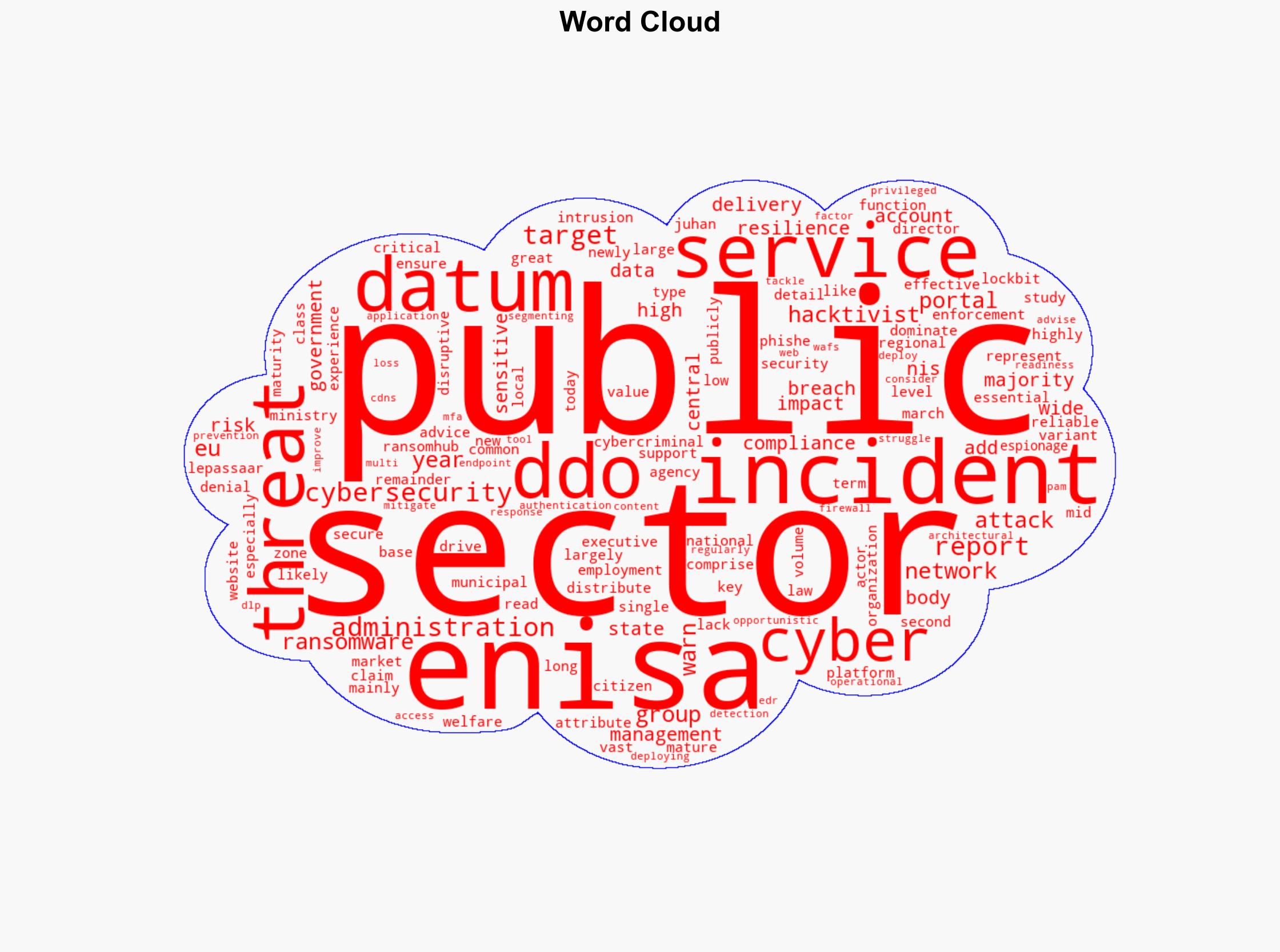Hacktivist-Driven DDoS Dominates Attacks on Public Sector – Infosecurity Magazine
Published on: 2025-11-06
Intelligence Report: Hacktivist-Driven DDoS Dominates Attacks on Public Sector – Infosecurity Magazine
1. BLUF (Bottom Line Up Front)
Hacktivist groups are primarily responsible for the surge in DDoS attacks on the public sector, with a high likelihood of continued threat due to low cybersecurity maturity in this sector. The most supported hypothesis is that hacktivists are exploiting vulnerabilities in public sector cybersecurity to advance their agendas. Confidence level: High. Recommended action: Enhance cybersecurity measures, focusing on DDoS mitigation and compliance with NIS directives.
2. Competing Hypotheses
1. **Hypothesis A**: Hacktivist groups are the primary drivers of DDoS attacks on the public sector, motivated by ideological goals and exploiting low cybersecurity maturity.
2. **Hypothesis B**: State-backed actors are disguising their activities as hacktivist-driven to obscure their true intentions and exploit public sector vulnerabilities for espionage.
Using the Analysis of Competing Hypotheses (ACH) 2.0, Hypothesis A is better supported due to the prevalence of hacktivist claims and the alignment of attack patterns with known hacktivist methods. Hypothesis B lacks direct evidence of state-backed involvement disguised as hacktivism.
3. Key Assumptions and Red Flags
– **Assumptions**: Public sector entities have lower cybersecurity maturity compared to other sectors. Hacktivists have the capability and motivation to conduct DDoS attacks.
– **Red Flags**: Lack of detailed attribution data could mask the involvement of other actors. Potential bias in attributing attacks primarily to hacktivists without considering state actor deception.
– **Blind Spots**: Limited visibility into the origins of certain attacks and potential underreporting of state-backed activities.
4. Implications and Strategic Risks
The persistence of DDoS attacks poses significant risks to public sector operations, potentially disrupting critical services and eroding public trust. The economic impact includes increased costs for cybersecurity measures and potential losses from service disruptions. Geopolitically, misattribution of attacks could escalate tensions if state actors are involved. The psychological impact includes heightened fear and uncertainty among citizens.
5. Recommendations and Outlook
- Implement robust DDoS mitigation strategies, including CDNs and WAFs.
- Enhance compliance with NIS directives to improve cybersecurity maturity.
- Conduct regular cybersecurity drills and threat assessments.
- Scenario Projections:
- Best Case: Successful mitigation reduces attack frequency and impact.
- Worst Case: Increased attack sophistication overwhelms defenses, leading to significant service disruptions.
- Most Likely: Continued attacks with gradual improvement in defense capabilities.
6. Key Individuals and Entities
– Juhan Lepassaar (ENISA Executive Director)
– ENISA (European Union Agency for Cybersecurity)
7. Thematic Tags
national security threats, cybersecurity, counter-terrorism, regional focus





